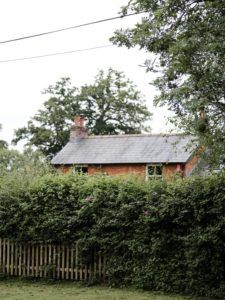Most dwellings built for agricultural purposes are subject to an occupancy condition which restricts the occupation of the dwelling to a person employed in agriculture.
In terms of the wording of such conditions, whilst there have been many variations since the 1950s, generally the standard condition will state:
‘The occupation of the dwelling shall be limited to a person solely or mainly employed, or last employed, in the locality in agriculture or in forestry, or a widow or widower of such a person, and to any resident dependants’.
Irrespective of changes to the farm, the condition will remain on the dwelling in perpetuity ensuring it is available to the wider ‘agricultural community’.
Acorus was contacted for advice regarding the potential removal of an agricultural occupancy condition imposed on a farm dwelling which was purchased in 2010. In this case the occupancy condition was the standard condition as aforementioned.

At the time of purchase the dwelling and associated land was used for agricultural purposes and our Client complied with the condition. However, over time our client’s employment moved away from agriculture and into an associated business working for farmers. This change of employment status with our client no longer being ‘solely or mainly’ employed in agriculture meant the dwelling was being occupied in breach of the condition. Additionally, no other member of our client’s family worked in agriculture and therefore they did not meet the terms of the condition.
Acorus advised the client to apply for a lawful development certificate in order to ratify the breach in planning control. Our client was able to provide the necessary evidence to support such an application which proved ‘on the balance of probability’ that the dwelling had been occupied continuously in breach of the condition for in excess of ten years.
The Certificate of Lawfulness application was successful, the Local Planning Authority deemed the case lawful and issued a Certificate. The Certificate allows the lawful occupation of the dwelling, by the applicant and his family, and therefore the client is exempt from any enforcement action. However, the agricultural occupancy condition remained on the dwelling. This meant that if at any time in the future the dwelling was occupied by persons employed in agriculture, the condition would become ‘live’ again.
With that in mind, the Client decided to apply for removal of the condition. This is often advised by Acorus for clients who are keen to ensure the condition can’t be reactivated. This also assists if the dwelling is ever sold. Prospective buyers prefer a dwelling where the condition is no longer associated with the property, as borrowing funds from lenders for tied properties is difficult.

A planning application for removal of the condition was submitted and approved by the Local Planning Authority on the basis the condition could no longer be enforced upon with the Lawful Development Certificate in place.
Our client is delighted with the outcome and is planning to borrow funds against the increased value of the property to develop the business.
This is a common scenario within the rural community and Acorus has assisted many clients over the years to achieve a successful outcome.






